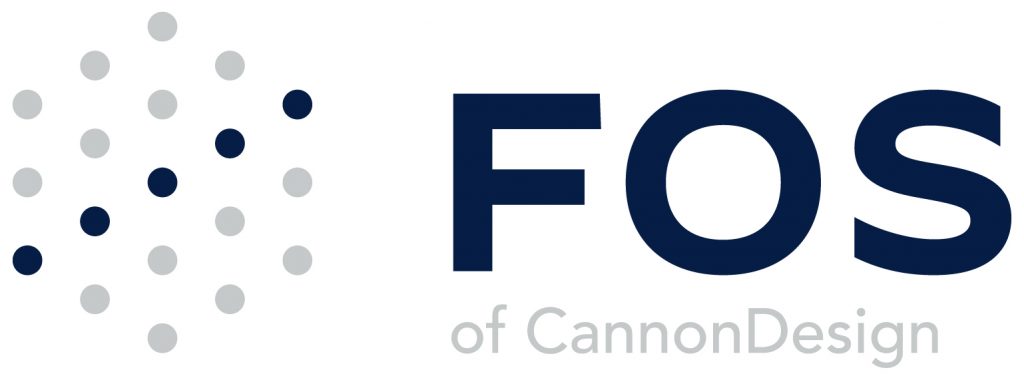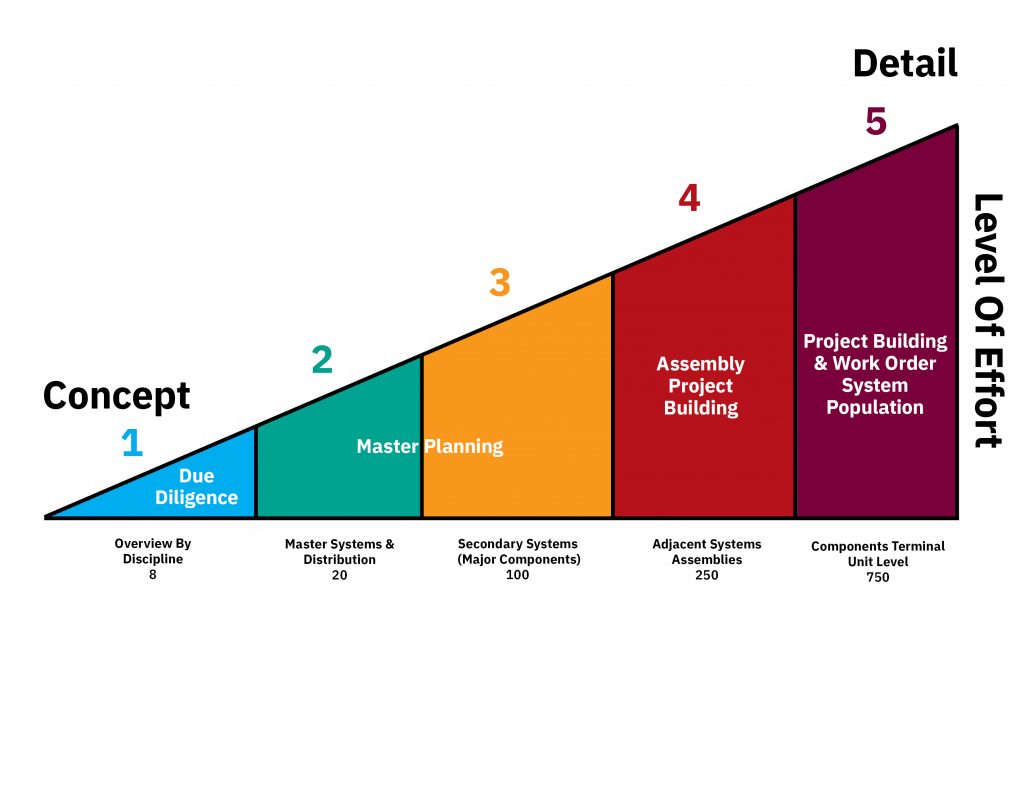APPA Business Partner Whitepaper Series
When it comes to facilities optimization, information is crucial to making defensible decisions. Facility condition assessments (FCAs) collect and create data to support maintenance planning and capital improvement strategies. How do organizations define and communicate FCA level of detail based on the desired outcome? Understanding the appropriate FCA level of detail allows for enough data to support decisions, while avoiding information management overload.

How information extracted from FCA data supports decision making –
Organizations face objectives, priorities, and opinions that drive investments in facility infrastructure renewal. While it’s understood that necessary investments must compete with other organizational needs, it’s necessary to be able to objectively state a case to decision makers. Conducting an FCA creates or obtains reliable data – supporting decisions and demonstrating that priorities are in line with your organizations long-term best interests.
The objective data delivered by an FCA should accurately quantify and strategically prioritize deferred maintenance and capital renewal needs. When done properly, defensible information is received to advocate for limited investment resources and prioritizing within these limited budgets. These results can exist as a communication tool between those responsible for maintaining facilities and the decision makers they report to.
Understanding what factors drive the FCA level of detail –
The most important thing to do is define the end-goal and end-use of the data prior to planning an FCA. Facility Optimization Solutions (FOS), a professional services and software consultancy who is ranked number one worldwide for facility management services by World Architecture 100, recommends that you first ask why you need decision making information and how that will help you accomplish your mission. How you are going to use the FCA must inform how the data is collected. FOS strives to identify and make clear what kind of data is desired, and how much is actually needed, to help organizations avoid data overload.
Once the end use is defined, you can begin defining the level of detail. This is directly related to the quantity of data that will be collected. Gathering too little data will not yield sufficient decision-making information; however, too much data can create a complicated dataset that is cumbersome to interpret and manage. The end use and long-term mission must guide the decision of how much data is sufficient for the purpose while existing resources remain manageable.
Defining and communicating the FCA level of detail –
Using an industry-standard catalog of building and infrastructure elements is necessary to define and communicate the required FCA level of detail. The good news is that you don’t have to reinvent the wheel. An industry standard catalog exists, known as UniFormat®, through the Construction Specifications Institute (CSI). UniFormat® is an industry standard for both FCAs and construction cost estimating. Divided into five levels, UniFormat® is a scalable definition of building systems.
Level 1 = conceptual / Level 5 = granular / Levels 2, 3, and 4 = exist in between. Suitable for different uses.
Common uses of an FCA are easily attributed to each level of UniFormat®. Described by Figure 1, property investment (or divestment), master planning, assembly cost estimating, and asset inventory with work order system population each require a different level of detail for success. For example, understanding an asset or portfolio at a conceptual level can be useful for property due diligence, where granular data collection might be overkill. On the other hand, conceptual level data collection is insufficient to create an asset inventory and integrate with a work order system.

The levels of UniFormat®, what do they mean –
UniFormat® Level One: Understand your assets at a high level. You can expect narrative data by major group elements such as structure, shell, interiors, services, equipment, furnishings, and special construction. For an entire building (or asset) deficiency, needs, and replacement cost estimates are aggregated by major group element. This is useful when you have a large portfolio of buildings with incomplete or unknown basic information. UniFormat® Level One is also useful for property due diligence, since you can quickly determine the current condition and understand big picture needs and liabilities.
UniFormat® Level Two: Collect about twenty pieces of asset information. This level, known as group elements, creates discipline-based datasets including mechanical, plumbing, fire protection, HVAC, electrical, communications, structural, architectural interior, architectural exterior, site, civil, and landscape. Cost estimates are aggregated by group element for an entire building or asset. This level of detail is well suited for master planning projects. It helps identify the current state of conditions while defining the where, when, and at what cost major renovations should be performed. Plus, this level of detail helps clearly define those assets where continued investment may be more costly than replacement.
UniFormat® Level Three: Collect about fifty pieces of individual element or system level information. This extremely useful level of data creates information to advise system-based deferred maintenance and capital renewal projects. Cost estimates are developed at the major and minor system level. With UniFormat® Level Three, the information is sufficient to develop five and ten-year capital plans to prioritize, budget, and advocate for identified projects.
UniFormat® Level Four: Provides data at the assembly level. This level is especially useful for cost estimating exercises, for an assembly such as exterior cladding, windows, and sunscreens. These can be grouped for cost estimating purposes for renovation or reconstruction. Deferred maintenance rarely exists within the confines of assembly groups, so this level is not ideal for project building, CMMS, or preventative maintenance planning.
UniFormat® Level Five: Capture hundreds of individual data points at the individual component level. This level of detail is often used to create an asset inventory and integrate data with work order platforms for preventive and predictive maintenance planning. Cost estimates are developed for each individual component that is assessed or inventoried. A comprehensive UniFormat® Level Five FCA will generate a very large amount of data. For this reason, a components-based approach is often done as a hybrid with a systems-based approach. This method targets certain asset types of disciplines for a component level assessment and inventory, while others are assessed at a UniFormat® Level Three major and minor systems level. The hybrid approach helps reduce the data overload and ensures a useful product that is maintainable for the long-term.
Testing and calibrating FCA level of detail –
The best way to calibrate what is needed is a cross-sectional pilot FCA. This is where FOS typically performs data collection on a limited sample of the portfolio, 10% to 20% of the square footage for example, including multiple building types or departments if possible. The purpose of this is to test the data collection and deliverable, ensuring it meets the goals defined during the FCA planning process. If the test-product doesn’t capture the data needed to facilitate next-steps, the process or level of detail is refined prior to completing the remaining asset portfolio.
The importance of third party data –
Third party data is valuable when it’s produced in an objective, consistent manner without bias. This allows you to focus on tangible, quantitative information rather than anecdotal stories, perceptions, individual goals, or conflicts that may occur when an FCA is performed by in-house staff. FOS suggests being mindful that committing in-house staff to an FCA effort may likely compromise existing responsibilities. Plus, in-house resources may lack the experience and efficiency of a third-party consultant.
Cost data is a critical aspect of an FCA that can make or break the integrity of decision-making information. FOS recommends cost estimators be a mandatory part of the project team, with an active role. At the end of the day, you are personally certifying the results of the data to a board or c-suite. It’s imperative that the cost estimates accurately support project budgeting and sequencing, to substantiate other asset investment or divestment choices.
Takeaways and tips –
- The level of detail and the extent of inclusions/exclusions are vital to project success. The truth is you’re going to have to keep your data alive somehow, and you’re going to want to manage that as little as possible while still being able to justify decisions.
- Consider using CSI UniFormat®. It’s the industry standard and helps determine to others what level of detail is needed to meet objectives.
- Conduct a pilot to establish the acceptable level of detail for an FCA. Ensure that all stakeholders are satisfied before you move forward with the remaining portfolio.
- Make sure your FCA partner has construction cost-estimators on staff. Then they are responsible for their estimates and not utilizing generalized published estimating guides.
- Consider procuring FCA services using a qualifications-based solicitation first. Educate your team on the offerings that the market currently has, to better understand the language that professionals use for this type of work. Qualify vendors that will tailor their process around your needs and negotiate from there.
Making smart decisions for your facilities should be centered on data-driven insights. FOS uses our in-house FCA and capital planning software, FOScore®, to help organizations like yours gather and analyze facility data to make informed choices. See for yourself how FOS solutions can be tailored to your facility management needs: www.foscd.com
##
About the Author: Nick Derr, Client Services Leader, [email protected]
Nick Derr is a third-generation builder, designer, consulting facility planner, and software implementation specialist. With over 20 years of technically focused experience, he excels at creating data centered programs that empower clients to realize new goals. He is responsible for engaging FOS clients as a partner in the total process, ensuring stakeholder satisfaction and valid results – all while driving meaningful and measurable improvements in the built environment throughout our communities. Nick’s unique blend of experience, passion, and leadership has propelled the FOS team over the last decade from a small team of two to a major, multi-office practice.
About FOS:
Facility Optimization Solutions LLC (known as FOS) is a multidisciplinary professional services and software consultancy, providing physical asset management, building cost data, and strategic planning solutions across the country. Founded in 2009 by Joe Cassata, RA, NCARB, FOS delivers solutions to facility managers and owners across all markets, including higher education, PK-12, government, and healthcare. This past year, FOS was ranked #1 worldwide for facility management services by World Architecture 100.
Posted March 14, 2022
Read more from the APPA Business Partner Whitepaper Series
 Create an Account
Create an Account
 Login/myAPPA
Login/myAPPA
 Bookstore
Bookstore
 Search
Search  Translate
Translate